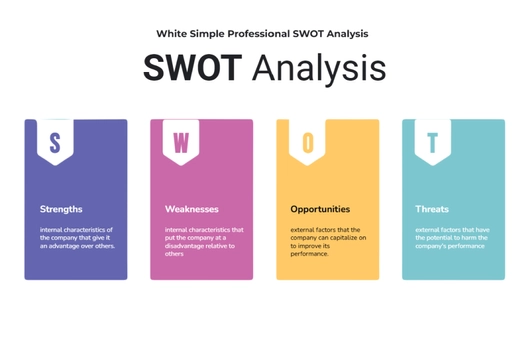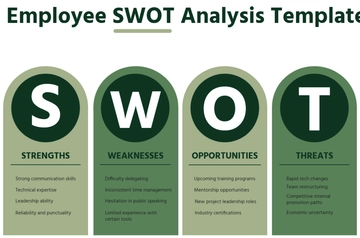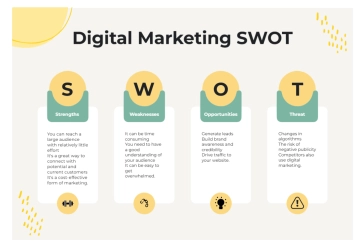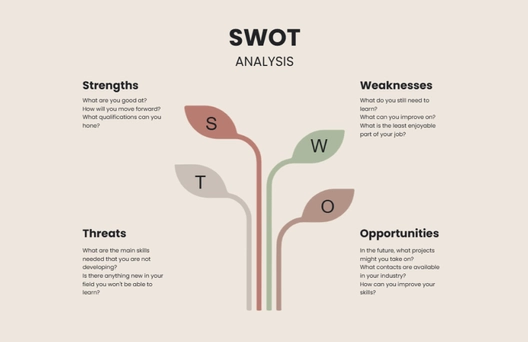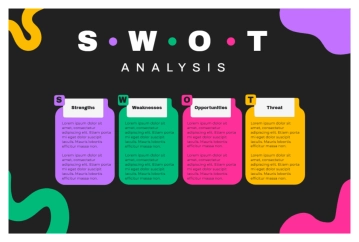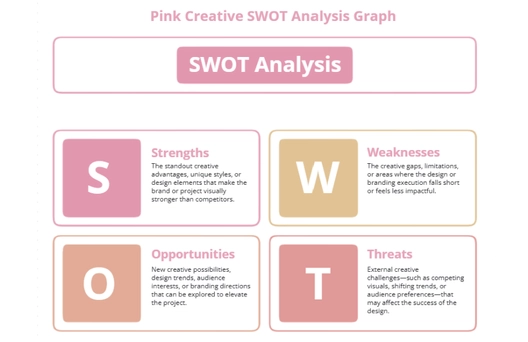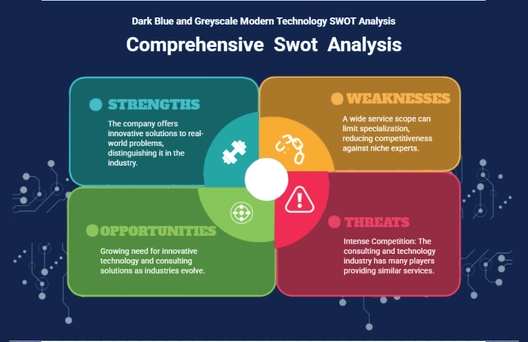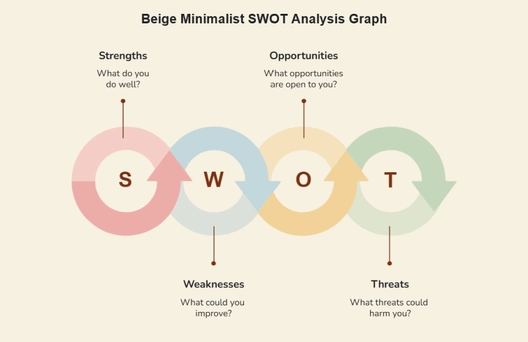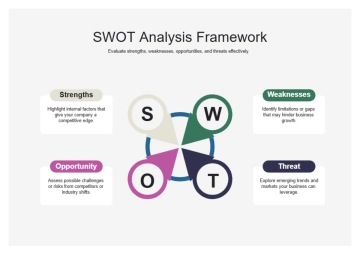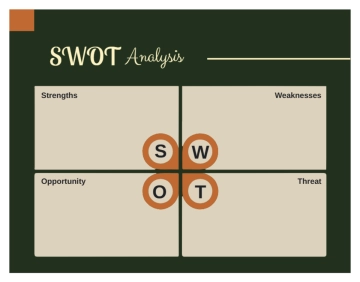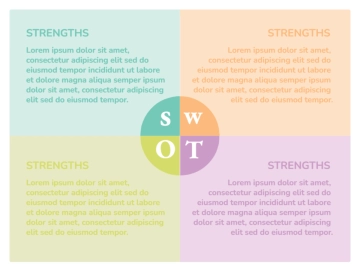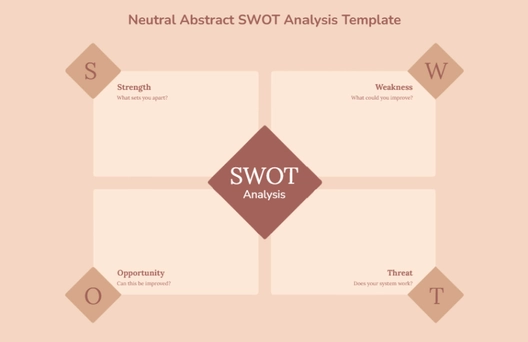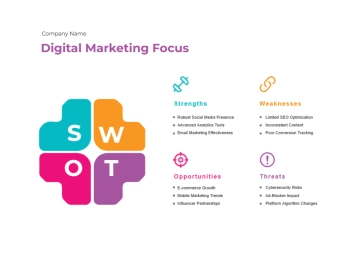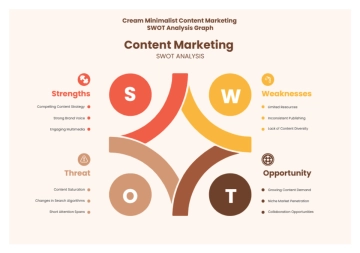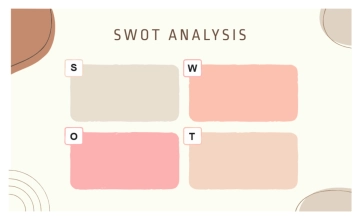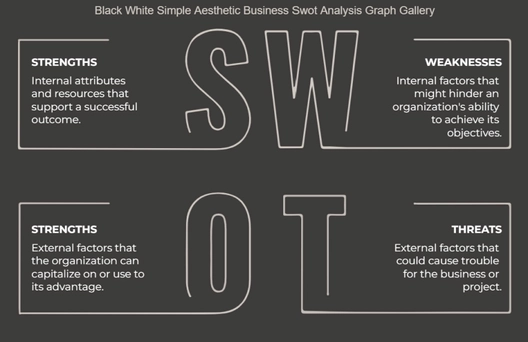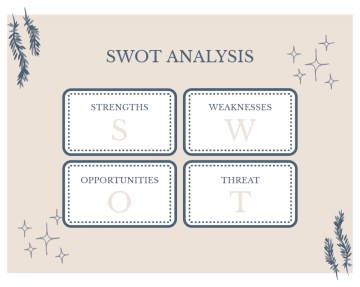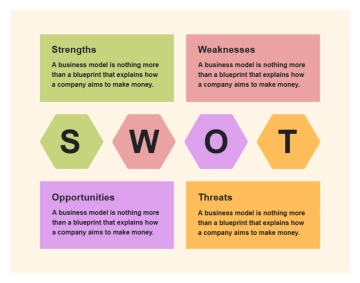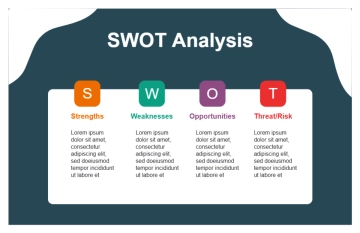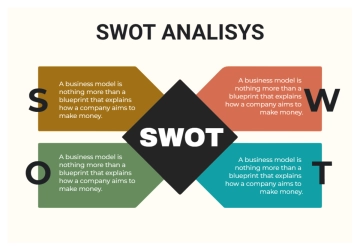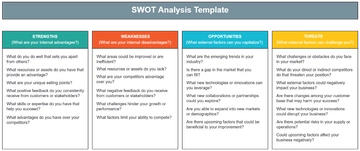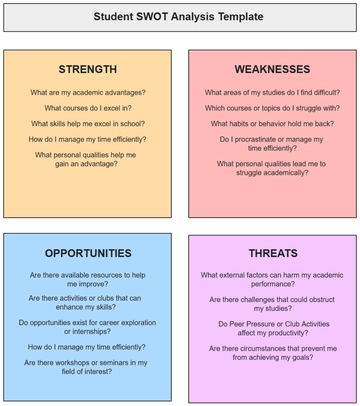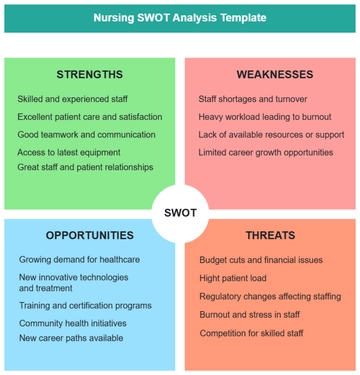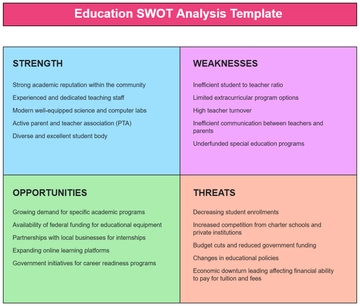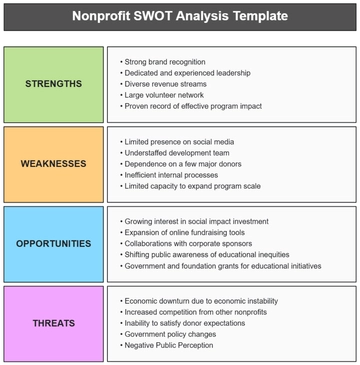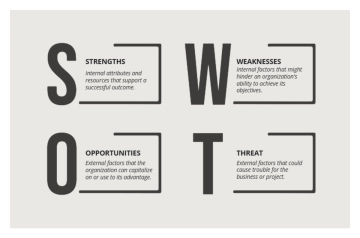Free SWOT Analysis for Advertising Strategy
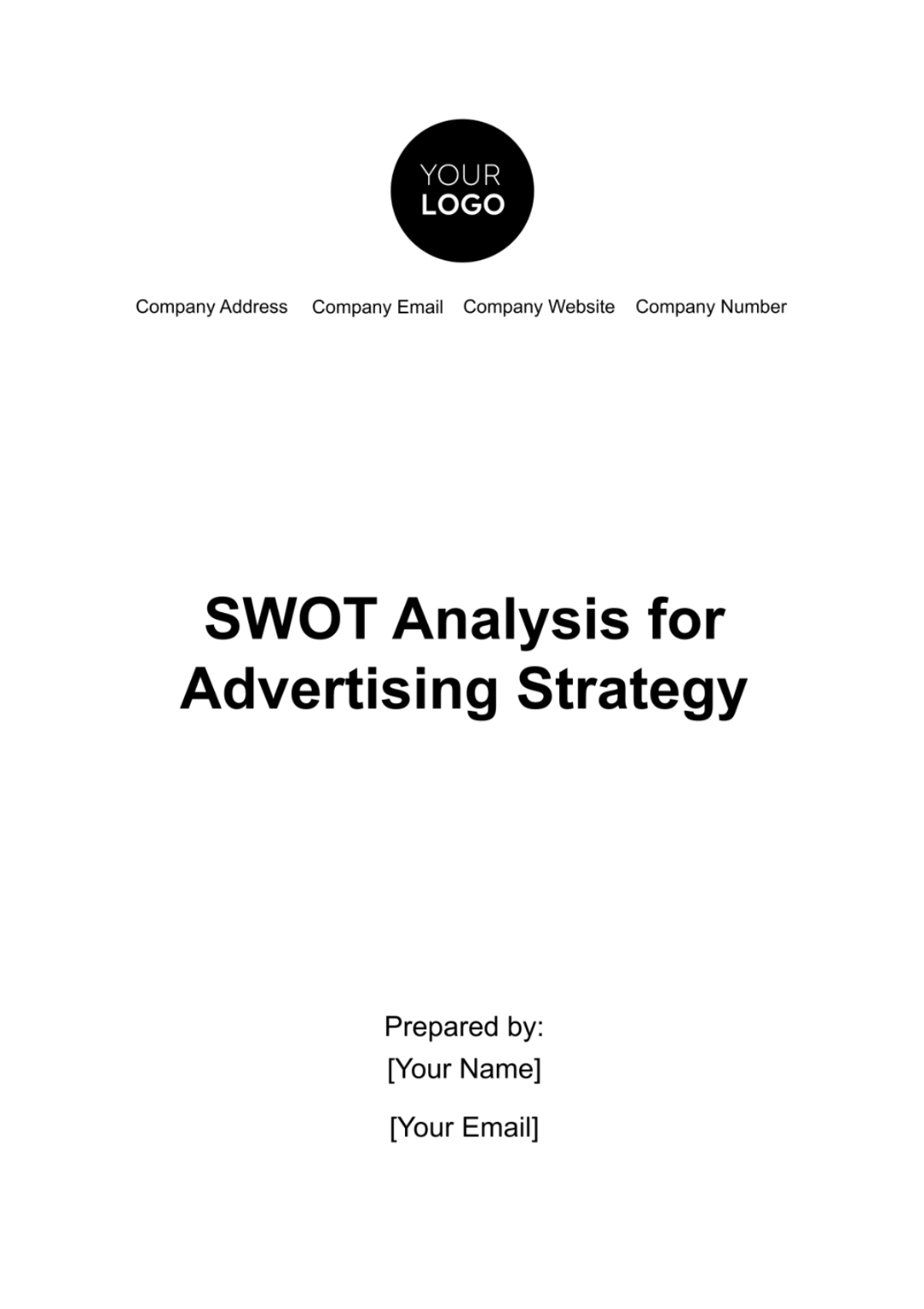
I. Introduction
In the fast-paced and ever-evolving world of advertising, developing a strategic approach that aligns with company goals and market dynamics is crucial for sustained growth and success. [Your Company Name] stands at a pivotal juncture, where the effectiveness of its advertising strategy is not just a component of its marketing efforts but a cornerstone of its competitive advantage. This document presents a comprehensive SWOT (Strengths, Weaknesses, Opportunities, and Threats) analysis, aiming to dissect the multifaceted aspects of [Your Company Name]'s current advertising strategy. Through this analysis, we seek to identify the core areas where the company excels, areas that require reinforcement, potential avenues for expansion, and external challenges that might impede progress. The objective is clear: to sculpt an advertising strategy that is not only robust and adaptable but also capable of navigating the complexities of the market and consumer behavior, ensuring [Your Company Name] not only endures but thrives in the advertising domain.
II. Objective
The objective of conducting a comprehensive SWOT analysis for [Your Company Name] transcends the mere assessment of its advertising strategy; it is a foundational endeavor aimed at sculpting a roadmap that aligns with the company’s long-term vision and operational imperatives. In an era where the advertising landscape is continually reshaped by technological advancements, shifting consumer behaviors, and evolving market dynamics, the need for [Your Company Name] to not only understand but also strategically navigate these changes is paramount. This analysis is crafted to serve as a pivotal instrument in this navigation, offering a detailed examination of the internal and external factors that influence the company's advertising efficacy and market presence.
At its core, this objective is rooted in the desire to harness a deep understanding of [Your Company Name]'s inherent strengths. These strengths are the unique attributes and resources that the company can leverage to gain a competitive edge in the advertising realm. By identifying and amplifying these strengths, the analysis aims to empower [Your Company Name] to capitalize on its established brand reputation, the creativity and skills of its advertising team, and the successes of its past advertising campaigns. The acknowledgment and strategic utilization of these strengths are vital in crafting advertising messages that resonate with the target audience, thereby enhancing brand visibility and engagement.
Conversely, acknowledging and addressing the weaknesses within [Your Company Name]'s advertising strategy is equally critical. These weaknesses, whether they pertain to a limited digital presence, insufficient data analytics practices, or a narrow focus on traditional advertising mediums, represent areas where the company is vulnerable to competitive displacement and market irrelevance. The objective here is to provide a candid assessment of these vulnerabilities, setting the stage for targeted improvements that can transform potential weaknesses into new strengths or areas of opportunity. This aspect of the analysis is crucial for fostering a culture of continuous improvement and adaptability within the company's advertising strategy.
The exploration of opportunities forms another cornerstone of this analysis. In a rapidly changing advertising ecosystem, new platforms, technologies, and consumer trends emerge with relentless pace. Identifying these opportunities — from the potential in emerging markets and demographic segments to the advantages offered by digital transformation and technological innovation — is essential for [Your Company Name] to remain agile and forward-looking. This analysis aims to spotlight these opportunities, providing [Your Company Name] with a strategic foresight that enables it to preemptively adapt and innovate, thus staying ahead of market curves and consumer expectations.
Furthermore, this objective encompasses the identification and mitigation of external threats that could impede [Your Company Name]'s advertising success. The advertising arena is fraught with challenges, from the intensity of competition and the volatility of promotional costs to the capricious nature of consumer preferences. Understanding these threats in depth allows [Your Company Name] to devise preemptive strategies that safeguard its market position and advertising efficacy. This proactive approach to threat management is instrumental in ensuring the resilience and sustainability of the company's advertising efforts.
In sum, the overarching objective of this SWOT analysis is to furnish [Your Company Name] with a comprehensive, nuanced understanding of its advertising strategy within the context of the current market landscape. It aims to equip the company with actionable insights that guide the optimization of existing strategies, the exploration of new opportunities, and the fortification against potential threats. This structured approach is not merely about assessment; it is about empowerment. It seeks to transform insights into actions, challenges into opportunities, and strategies into tangible results. Through this analysis, [Your Company Name] will be poised to elevate its advertising strategy, ensuring it is not only reflective of the company's ambitions and capabilities but also adaptive to the evolving demands of the marketplace and the expectations of its consumers.
III. SWOT TABLE
The SWOT table presented herein offers a succinct yet comprehensive overview of [Your Company Name]'s advertising strategy, encapsulating the internal strengths and weaknesses alongside external opportunities and threats. This analysis serves as a strategic framework, guiding the company in leveraging its strong brand reputation, creative prowess, and historical successes in traditional advertising to navigate and capitalize on the digital frontier. It also addresses the imperative to augment data analytics capabilities and diversify advertising mediums. By exploring new markets and embracing technological advancements, while remaining vigilant of the competitive landscape and evolving consumer expectations, [Your Company Name] is poised to refine its advertising approach, ensuring sustained growth and resilience in a dynamic market environment.
Strengths | Weaknesses | Opportunities | Threats |
|---|---|---|---|
Strong brand reputation and credibility in the market | Limited digital presence and engagement | Targeting emerging markets and demographic segments | Intense market competition and rapidly changing industry trends |
Highly skilled and creative advertising team | Insufficient data analysis for advertising optimization | Utilizing advanced advertising technology and automation | Fluctuating advertising and promotional costs |
Successful traditional advertising campaigns | Lack of diversification in advertising mediums | Collaborating with influencers and content creators | Changing consumer preferences and behaviors |
A. Strengths
Strong Brand Reputation and Credibility: [Your Company Name] has established a robust presence in the market, recognized for reliability and quality. This foundation provides a significant competitive advantage in advertising efforts, as consumers are more receptive to messages from trusted brands.
Highly Skilled and Creative Advertising Team: The company boasts a talented pool of advertising professionals capable of generating innovative and engaging campaigns. This internal resource is a critical asset in the development of compelling advertising narratives that capture audience attention.
Successful Traditional Advertising Campaigns: [Your Company Name] has a proven track record of effective traditional advertising, including print, television, and radio. This experience underpins the company's ability to create resonant advertising content that appeals to a broad audience.
B. Weaknesses
Limited Digital Presence and Engagement: Despite successes in traditional mediums, [Your Company Name] lags in digital engagement. In today's rapidly evolving digital landscape, this gap limits the company's ability to connect with younger and tech-savvy demographic segments.
Insufficient Data Analysis for Advertising Optimization: There is a noticeable lack of comprehensive data analytics practices to measure and optimize advertising performance. This shortfall hampers the company's ability to make data-driven decisions and improve ROI on advertising spend.
Lack of Diversification in Advertising Mediums: The company's advertising strategy is heavily reliant on traditional channels, with insufficient exploration of digital platforms such as social media, search engines, and content marketing. This approach may not fully leverage the opportunities presented by digital transformation.
C. Opportunities
Targeting Emerging Markets and Demographic Segments: By expanding its digital presence, [Your Company Name] can tap into emerging markets and demographic segments, particularly younger audiences who predominantly consume digital content.
Utilizing Advanced Advertising Technology and Automation: The adoption of cutting-edge technologies and automation tools can enhance advertising efforts, enabling more personalized and efficient campaigns that resonate with targeted audiences.
Collaborating with Influencers and Content Creators: Partnering with influential personalities and content creators can help [Your Company Name] reach broader and more engaged audiences, leveraging their credibility and following to promote the brand.
D. Threats
Intense Market Competition and Rapidly Changing Industry Trends: The advertising landscape is highly competitive, with constant shifts in consumer preferences and technological advancements. Staying ahead requires agility and continuous innovation.
Fluctuating Advertising and Promotional Costs: The costs associated with advertising and promotions are volatile, often influenced by market demand, platform policies, and economic factors. This unpredictability can impact budgeting and financial planning.
Changing Consumer Preferences and Behaviors: Today’s consumers are increasingly looking for authenticity, personalization, and value-driven content. Adapting to these evolving expectations is crucial for maintaining relevance and engagement.
IV. Action Items
To Leverage Strengths:
Capitalize on Brand Reputation: Develop campaigns that highlight the company's credibility and track record, reinforcing consumer trust and loyalty.
Innovate with Creative Team: Encourage the advertising team to experiment with new formats and platforms, fostering a culture of innovation and creativity.
To Address Weaknesses:
Expand Digital Footprint: Invest in digital marketing channels, including social media, SEO, and email marketing, to enhance online visibility and engagement.
Implement Data Analytics Tools: Adopt advanced analytics and performance measurement tools to glean insights from advertising campaigns, optimizing strategies based on real-time data.
Diversify Advertising Mix: Explore new advertising mediums and platforms, particularly those with growing audiences, to ensure a well-rounded and effective advertising strategy.
To Seize Opportunities:
Explore Emerging Markets: Conduct market research to identify and target emerging markets and demographics, tailoring campaigns to meet their preferences and needs.
Leverage Technology and Automation: Utilize advertising technologies for targeted advertising, automation for efficiency, and personalization to increase campaign effectiveness.
Engage with Influencers: Identify and collaborate with influencers and content creators who align with the brand’s values and target audience, extending the reach of advertising efforts.
To Mitigate Threats:
Foster Agility and Innovation: Stay abreast of industry trends and consumer behavior changes, adapting advertising strategies swiftly to remain competitive.
Plan for Cost Variability: Develop flexible budgeting strategies that can accommodate fluctuations in advertising costs, ensuring financial resilience.
Evolve with Consumer Expectations: Continuously research and respond to consumer trends, ensuring that advertising messages are relevant, authentic, and value-driven.
By meticulously executing these action items, [Your Company Name] can fortify its advertising strategy, ensuring it not only capitalizes on its current strengths but also dynamically adapts to the ever-changing landscape of consumer engagement and technology.
V. Conclusion
The journey through the SWOT analysis has illuminated the strategic landscape of [Your Company Name]'s advertising endeavors, unveiling a path laden with both promise and challenges. By leveraging its strengths, such as a strong brand reputation and a highly skilled advertising team, and addressing its weaknesses, including a limited digital presence and insufficient data analysis, [Your Company Name] is poised to redefine its advertising narrative. The opportunities identified, from targeting emerging markets to embracing advanced advertising technologies, offer a blueprint for innovation and growth. However, the threats of intense market competition, fluctuating costs, and changing consumer preferences serve as a reminder of the volatile environment in which the company operates. As [Your Company Name] moves forward, this SWOT analysis serves as a strategic compass, guiding the company not only to mitigate risks and overcome challenges but also to seize opportunities and harness its strengths. In doing so, [Your Company Name] will not just navigate the advertising landscape but will carve its own path, setting new benchmarks for excellence and innovation.
- 100% Customizable, free editor
- Access 1 Million+ Templates, photo’s & graphics
- Download or share as a template
- Click and replace photos, graphics, text, backgrounds
- Resize, crop, AI write & more
- Access advanced editor
Refine your advertising strategy with our SWOT Analysis for Advertising Strategy Template from Template.net. This editable and customizable tool that utilizes our AI editor aids in identifying strengths, weaknesses, opportunities, and threats in advertising strategies. A key to developing robust, data-informed approaches, it's indispensable for crafting effective, results-driven advertising plans.
